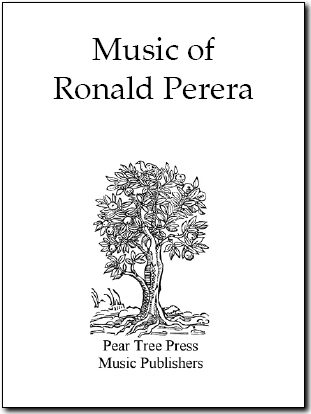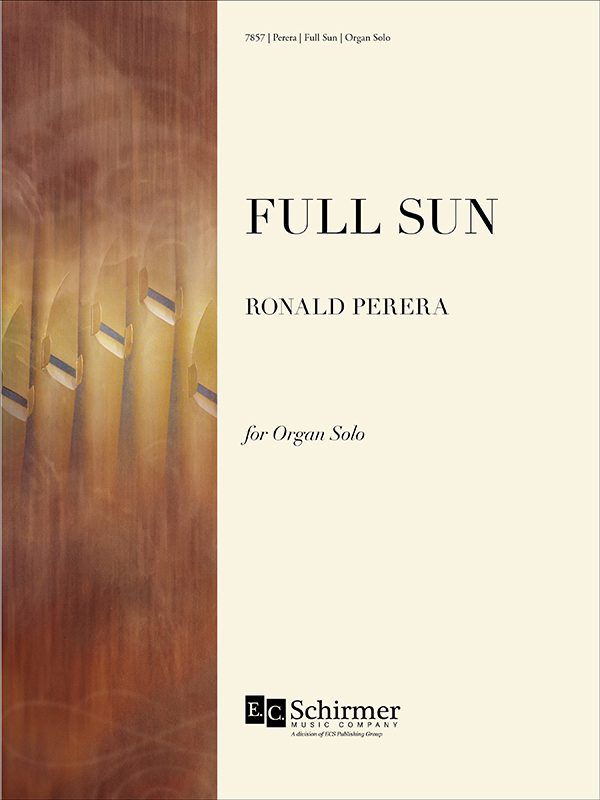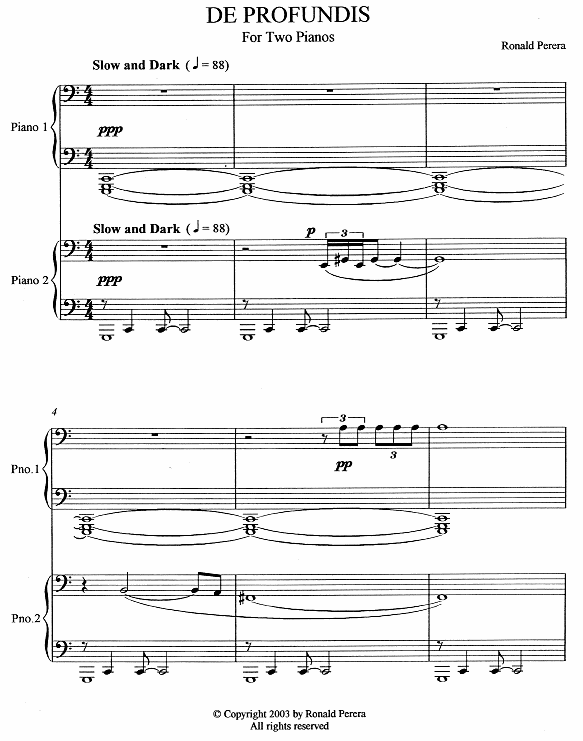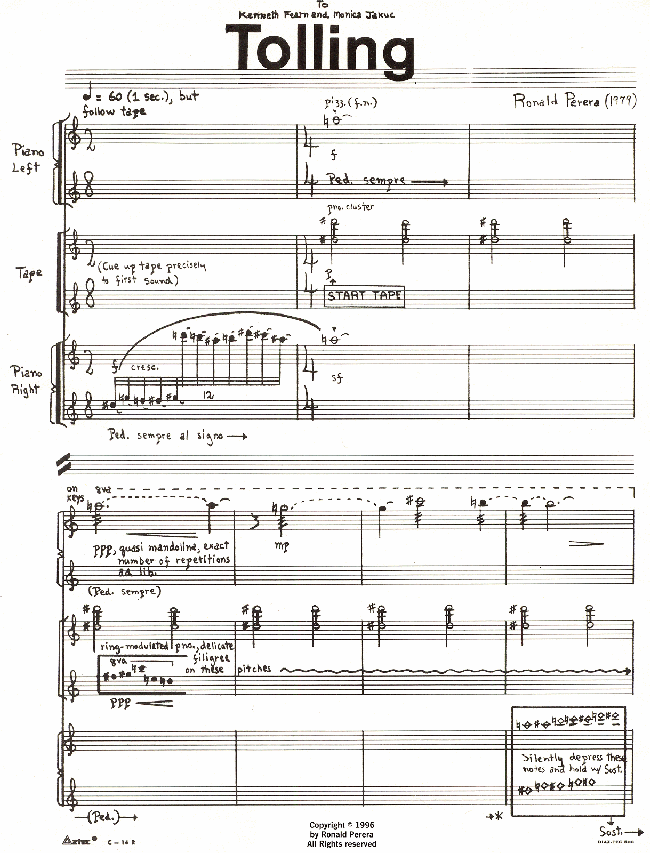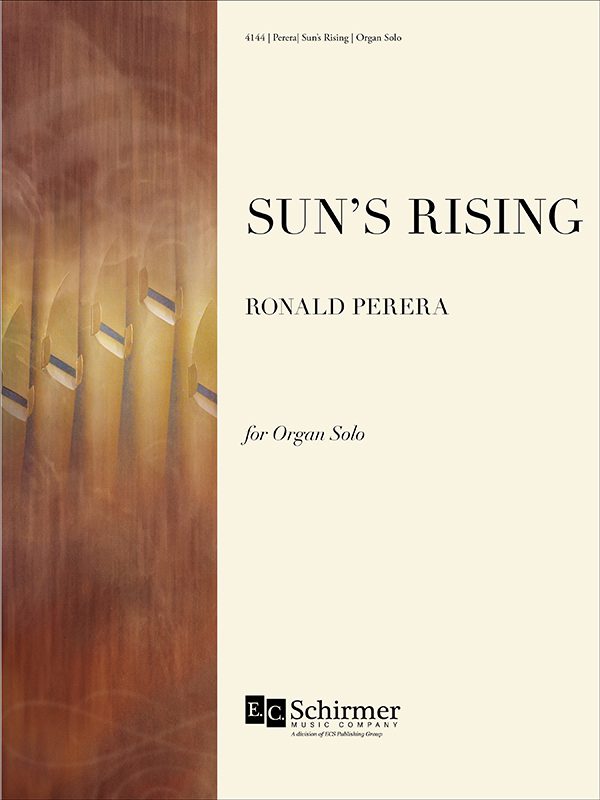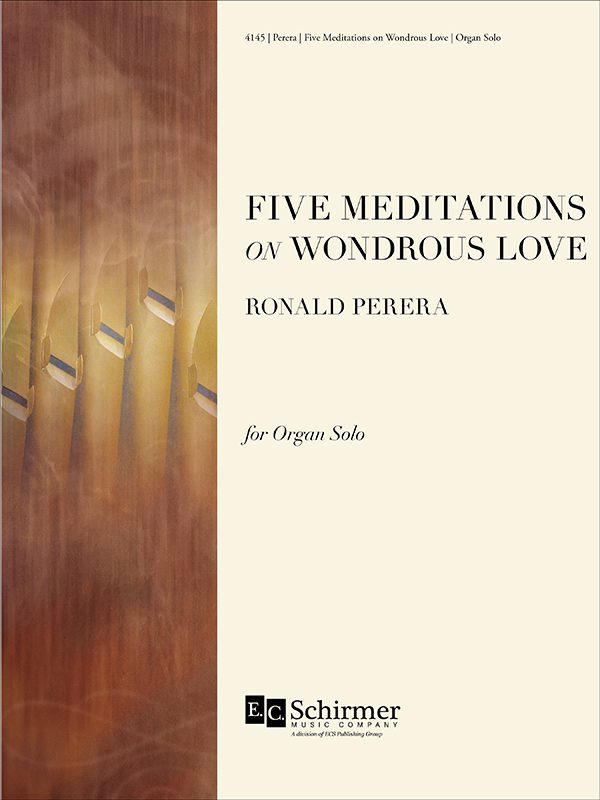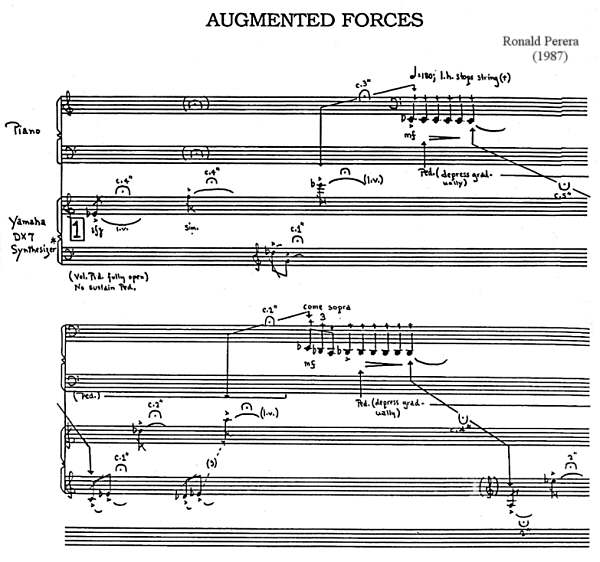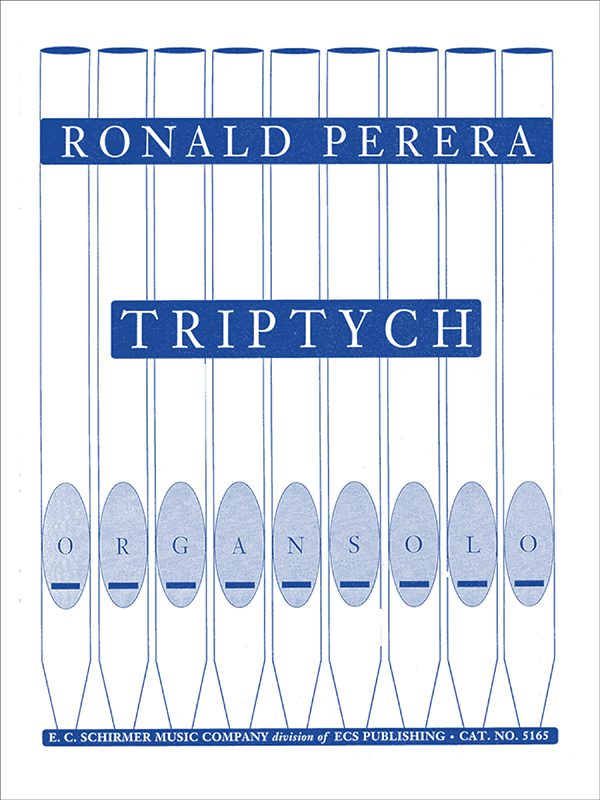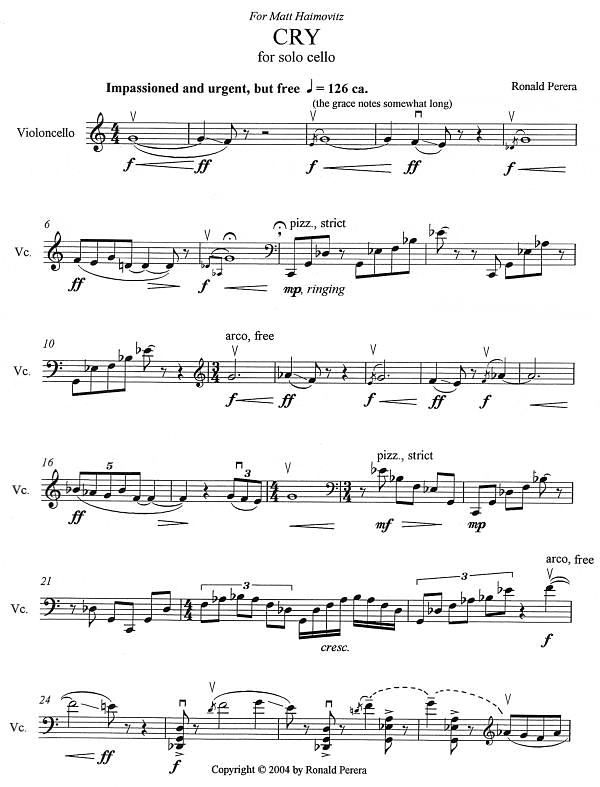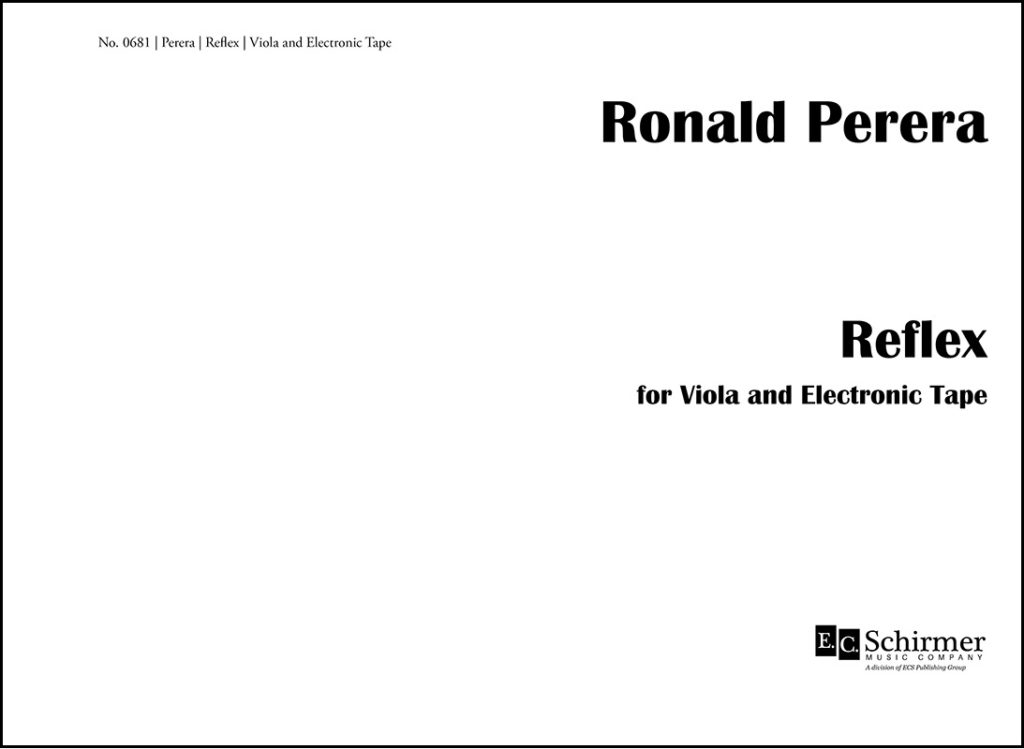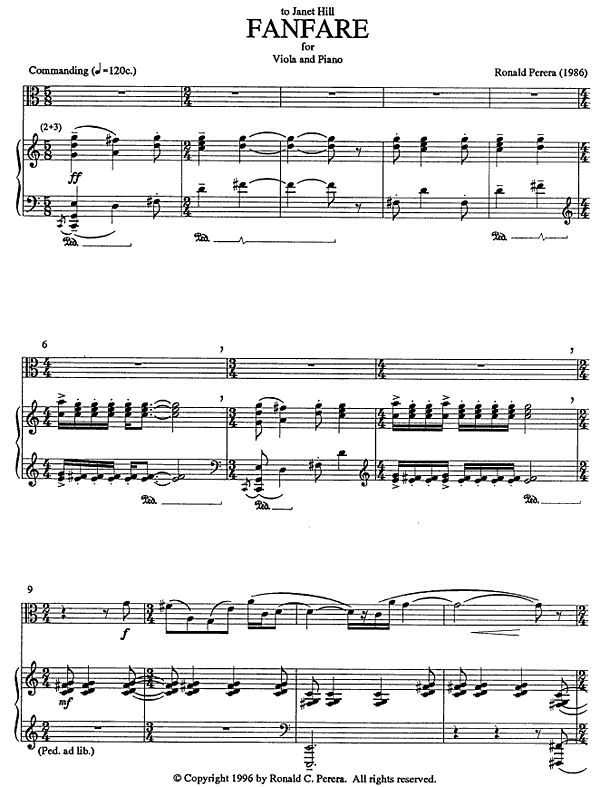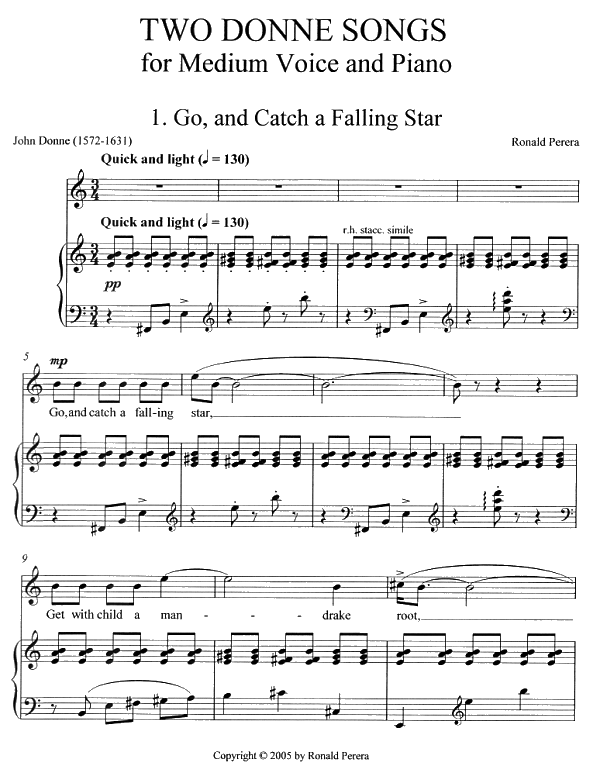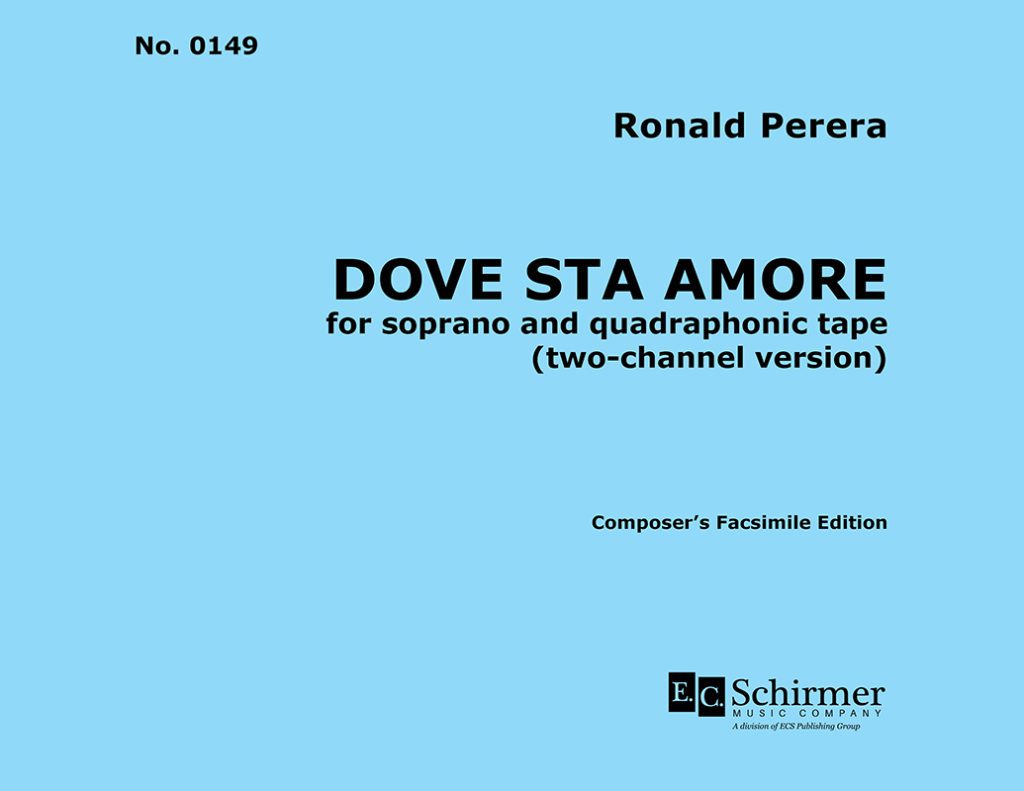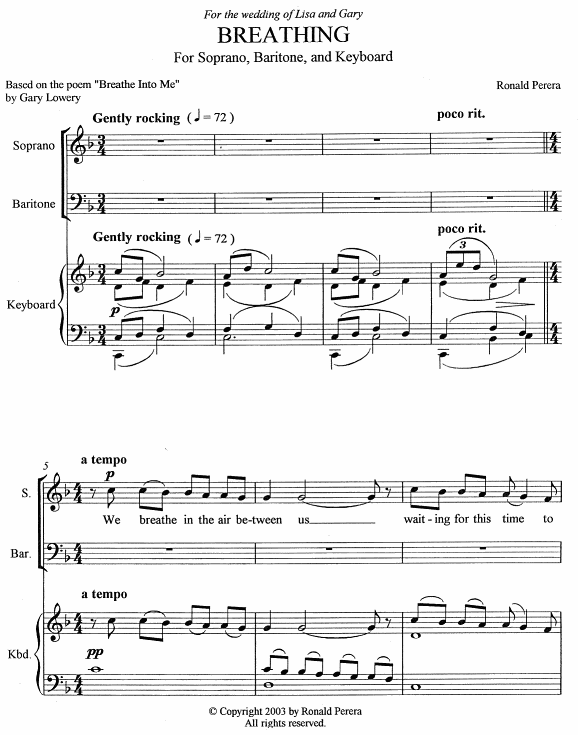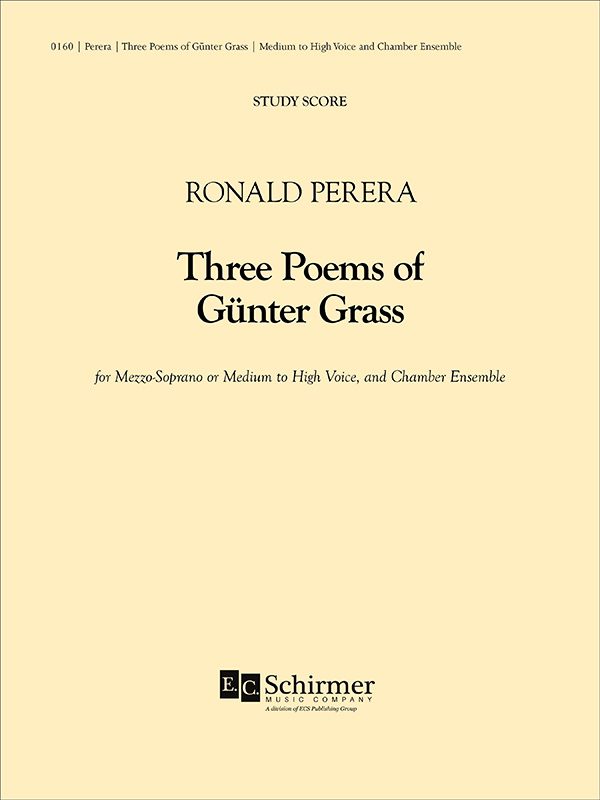Composition
SSAA Chorus and Piano (2020)…
| Composed: | 2020 |
| Text: | Music, When Soft Voices Die (Percy Bysshe Shelley) |
| Duration: | 4:30 |
| Publisher: | ECS Publishing |
| Catalog Number(s): | 8989 |
Score Sample:
Audio Excerpts:
Performed by the Smith College Glee Club, Jonathan Hirsh, Director.
Music, When Soft Voices Die
Three Poems in Time of War by Sara Teasdale for Soprano and Piano
Contents:
1. Winter Stars
2. A Boy
3. There Will Come Soft Rains
| Composed: | 2020 |
| Duration: | 7:30 |
| Publisher: | Pear Tree Press Music Publishers distributed by Subito Music Corp. |
| Catalog Number(s): | Piano/Vocal Score, Subito 80500183 |
SATB Chorus, String Quartet and Piano (arrangement)
Commissioned for the 50th Anniversary of the New England Classical Singers of Andover, Massachusetts, David Hodgkins, Artistic Director, for their 50th Anniversary.
String
| Composed: | 2018 |
| Text: | Music (Walter de la Mare) Music When Soft Voices Die (Percy Bysshe Shelley) Musician Wrestle Everywhere (Emily Dickinson) |
| Duration: | 9:00 |
| Publisher: | Pear Tree Press Music Publishers distributed by Subito Music Corp. |
| Catalog Number(s): | 80504013 (Full Score & Parts) 40504011 (Vocal Score) |
REVIEW OF “WHEN MUSIC SOUNDS” (Arrangement with String Quartet and Piano Accompaniment)
When Music Sounds by Ronald Perera (b. 1941), formed a trilogy setting three famous poems about music: Walter de la Mare’s “When Music Sounds,” Percy Bysshe Shelley’s “Music, When Soft Voices Die,” and Emily Dickinson’s “Musicians Wrestle Everywhere.” In the first stanza of de la Mare’s poem, the instruments alternate with the chorus as though inspiring them to declamation. An enchanting moment came, though, when the chorus and instruments united in the more intimate second stanza to describe the beauty of naiads rising out of the water before the final stanza returned to the fanfare-like mood of the first. Shelley’s poem speaks of olfactory and aural memories, likening music vibrating in the memory to love those slumbers on even when its object is gone. The composer’s colorful and sumptuous harmonies fit the text well, and Hodgkins elicited a lovely, clear tone from his singers. While Dickinson’s poem refers to wrestling and “silver strife,” Perera’s setting, using largely introspective and searching music, underlined that it is metaphorical. The final stanza (“Some say it is the spheres at play!”) opened forte but closed reflectively on a lush but questioning chord.
The Boston Musical Intelligencer
November 12, 2022
Score Sample:
Audio Excerpts:
Performed by the New England Classical Singers David Hodgkins, Artistic Director.
1. Music
SATB Chorus, String Quartet and Piano
Commissioned by the New England Classical Singers of Andover, Massachusetts, David Hodgkins, Artistic Director, for their 50th Anniversary.
| Composed: | 2018 |
| Text: | From A Week on the Concord and Merrimack Rivers by Henry David Thoreau |
| Duration: | 9:00 |
| Publisher: | Pear Tree Press Music Publishers distributed by Subito Music Corp. |
| Catalog Number(s): | 80504101 (Octavo) 80504102 (Set of Parts) 80504103 (Full Score) |
Score Sample:
Audio Excerpt:
Performed by the New England Classical Singers David Hodgkins, Artistic Director.
1.. “As we glided”:
Two Songs for Medium Voice and Piano on poems by Elizabeth Barrett Browning and Robert Frost
Medium Voice and Piano
Contents:
1. A Musical Instrument (Elizabeth Barrett Browning)
2. The Aim Was Song (Robert Frost)
| Composed: | 2017 |
| Duration: | 7:00 |
| Publisher: | Pear Tree Press Music Publishers distributed by Subito Music Corp. |
| Catalog Number(s): | Piano/Vocal Score, 181 (Subito #80500181) |
Kate Saik, soprano and Jerry Noble, piano
Organ Solo
This aria received its premier at Trinity Episcopal Cathedral, Pittsburgh, Pennsylvania, on December 4, 2005. The composer’s musical language is contemporary but completely satisfying. The lyricism and the beautiful formal elements are engaging to the player and the listener.
| Composed: | 2005 |
| Duration: | 3:00 |
| Publisher: | E. C. Schirmer Music Company |
| Catalog Number(s): | 8357 |
Reviews:
This organ solo was commissioned by and is dedicated to Carson Cooman, who gave the first performance in 2005. This publication incorporates a 2015 revision. It is a contemplative solo that calls for the use of solo reeds, flutes, and principal chorus. Suggested registrations are included on the score. This composition of medium difficulty is worth the effort to learn. Rubato is used throughout, with the tempo beginning as Adagio and moving up to a moderate tempo. This is a nice, well-written selection to add to any recital program.
CrossAccent, Summer 2016
TTBB (also available in SSAA and SATB with piano accompaniment)
A setting of six poems of David McCord. Commissioned by the MeistUrsingers chorus of the Tavern Club, Boston, in honor of Elliot Forbes.
Movements:
Earth Song
A Thing That I Love
Epitaph For A Waiter
The Cow Has A Cud
The Starfish
The Star In The Pail
| Composed: | 2004 |
| Text: | David McCord |
| Duration: | 9:00 |
| Publisher: | Pear Tree Press Music Publishers distributed by Subito Music Corp. |
| Catalog Number(s): | PTM 471 (TTBB) PTM 472 (SSAA) PTM 473 (SATB) |
Reviews:
“Two of those regulars were performed on this program, titled “Premiere! American Poetry Settings.” One was Ronald Perera, who was on hand for the New York premiere of “The Star in the Pai,” six songs set to whimsical poems by David McCord. Though the texts are pretty light, Mr. Perera’s pleasure in the fanciful words comes through in his appealing, quirky music, which the choristers sang with rich sound and liveliness.”
The New York Times Review Saturday, May 25, 2013
“Adding a touch of whimsical humor to the first half were Ronald Perera’s “The Star in the Pail,” cleverly imagined settings of six children’s poems by David McCord. Particularly, the perky, percussive “The Cow Has a Cud” and “The Starfish,” with its comical barroom piano vamp, drew chuckles from the audience. A part-time Cape resident, Perera was on hand to provide a brief, insightful commentary.”
Cape Cod Times 2/7/2006
Score Sample:
Audio Excerpt:
Performed by the Chamber singers of the Chatham Chorale. Conducted by Margaret Bossi, director.
The Star in the Pail:
SATB Chorus with Piano Accompaniment
Commissioned with the assistance of the Fromm Foundation for Thomas F. Kelly’s “First Nights” course of 2015 at Harvard University.
| Composed: | 2015 |
| Text: | Music (Walter de la Mare) Music When Soft Voices Die (Percy Bysshe Shelley) Musician Wrestle Everywhere (Emily Dickinson) |
| Duration: | 9:00 |
| Publisher: | Pear Tree Press Music Publishers distributed by Subito Music Corp. |
| Catalog Number(s): | 80504011 |
Reviews:
“A beautiful piece, perfectly suited to its purpose. Thrilling to its first audience, this is a work that shows how beautifully crafted music can have an immediate appeal.”
Thomas Forrest Kelly, Morton B. Knafel Professor of Music, Harvard University
SATB Chorus unaccompanied
Commissioned by the Harvard University Choir, Edward Jones, Organist and Choirmaster of Harvard Memorial Church, for the 2014 Carol Service. This setting of the well known Christmas poem ‘I Heard the Bells on Christmas Day’ restores some of the language that is commonly left out of most hymnals. This setting restores some of the anguish associated with the Civil War and allows for a tension not often associated with this text. A powerful setting.
“The title of the original Longfellow poem is ‘Christmas Bells.’ Charles Appleton Longfellow was the eldest son of the famous poet Henry Wadsworth Longfellow and Fannie Elizabeth Appleton, who lived in Cambridge, Massachusetts. In March of 1863, with the Civil War then in its third year, nineteen year old Charley ran away to Washington to join the Union Army. He presented himself for enlistment to the commander of Battery A of the 1st Massachusetts Artillery, who knew the boy. The officer contacted Henry who reluctantly gave his permission for the boy to enlist.
Charley proved himself such an exceptional soldier that he was soon offered a commission as a Second Lieutenant of Artillery. He first saw action at the Battle of Chancellorsville. In June he was briefly invalided home following a bout of typhoid fever and malaria, rejoining his unit in August. Then in November, during the Battle of New Hope Church, Charley was shot through the left shoulder, the bullet just grazing his spine. He narrowly avoided being paralyzed. Henry received word of Charley’s wounding on December 1, and he and a younger son went immediately to Washington, where Charley was in hospital, and brought him home to Cambridge. It was while nursing his son in his slow recovery that Henry Wadsworth Longfellow composed this poem during Christmas, 1863.” -Ronald Perera
| Composed: | 2014 |
| Text: | Christmas Bells (1863) by Henry Wadsworth Longfellow (1807-1882) |
| Duration: | 4:40 |
| Publisher: | E. C. Schirmer Music Company |
| Catalog Number(s): | 8320 |
Reviews:
“Ronald Perera’s A SOLDIER’S CAROL was the powerful centerpiece of Harvard University’s 105th Annual Christmas Carol Services in December 2014. Longfellow’s moving poem was a fitting commemoration to the 150th anniversary of the Civil War, and Perera’s haunting setting memorialized the centenary of the start of World War One in a building that itself commemorates the sacrifice of Harvard’s own in that conflict. It was one of those remarkable occasions when word, music, and environment inform each other to create a beautiful whole.”
Edward Elwyn Jones, Organist and Choirmaster, Harvard Memorial Church
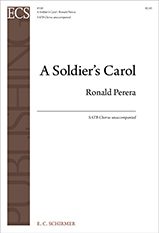

Score Sample:
Audio Sample:
Performance by Harvard University Choir, Edward Elwyn Jones, conductor.
A Chamber Opera in Two Acts
The Yellow Wallpaper is based on a Charlotte Perkins Gilman short story that was first published in New England Magazine in 1892. Set in a New England summer house in 1899, it describes the fate of Charlotte, a young wife and mother suffering from postpartum depression whose treatment — strict bed rest and a total absence of mental stimulation — leads to her emotional and intellectual decline. A contemporary tonal score with folk inflections.
Opera Cast:
Nell, a young girl, Realtor’s daughter (Soprano)
Emily, a young girl, Realtor’s daughter (Soprano)
Ed, an older workman (Bass)
Len, a younger workman (Tenor)
Realtor, a widower, father of Nell and Emily (Tenor)
John, a doctor, married to Charlotte (Baritone)
Jennie, John’s sister (soprano)
Charlotte, married to John, has “neurasthenia” (Soprano)
Dr. Silas Weir Mitchell, historical figure (Male voice*)
Woman in the Wall (Soprano**)
Mary, Ed’s wife, the baby’s nurse (contralto)
Women’s chorus (SSA, at least 6-9 singers)
Drunken clarinettist (male)
* This role involves almost exclusively a heightened speech (“Sprechstimme”) for which only rhythms and relative pitch are notated.
Instrumentation: Flute (doubling piccolo and alto flute), oboe, clarinet (doubling bass clarinet), bassoon, horn, trumpet, harp, piano (doubling celesta or, optionally, synthesizer), percussion (one player), string quintet (or small string orchestra)
Special: Onstage “drunken” clarinettist role may be played by the orchestra clarinet.
| Based on the short story by Charlotte Perkins Gilman | |
| Libretto by: | Constance Congdon |
| Original Conception/ Artistic Collaboration: | Mark Harrison |
| Composed: | 1989 |
| Duration: | 1 hour, 45 minutes |
| Publisher: | Pear Tree Press Music Publishers distributed by Subito Music Corp. |
Reviews:
“Perera’s music is well-made, tuneful, gratifying to voices and resourcefully orchestrated for 14 players. The opera is ingeniously organized, from the point of view of color, variety, thematic interrelationship and development.”
Boston Globe 5/19/89
“Perera’s music captures the odd drama of the story, and makes some very beautiful sounds along the way. The “chamber” orchestra is rather large, particularly in the percussion, but the scoring is of a rare transparency. Perera also writes vocal lines flattering to singers, and he knows how to compose ensembles of all sizes — a new musical voice worth hearing again.”
New York Daily News 12/11/92
“Mr. Perera… provided a pretty, eclectic score, full of melodies and skillfully orchestrated.”
New York Times
“The music is pleasing, often with a melodic line for each line of conversation – which gives a modern effect — rather than a melody sustained for an aria.”
Associated Press 12/10/92
“The libretto (by Constance Congdon) is an ingenious opening out of the highly interior novella, and it’s musically and visually opulent.”
Village Voice 12/22/92
“The New York premiere of Ronald Perera’s The Yellow Wallpaper was presented . . . in a noteworthy production . . . . MSM’s production made a persuasive case for the opera . . . . The principal singers [were] uniformly commendable.”
Opera News
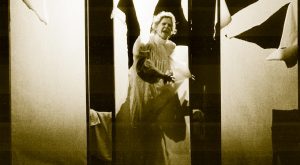

Score Sample:
Audio Excerpt:
Excerpt is from Act I, scene I. Singers include Jane Bryden, David Ripley, Jon Humphrey, Jan Opalach, Brad Aspel, and Karen Smith Emerson. Orchestra conducted by Dennis Burkh.
An Opera in One Act
Based on the book by Sam Swope, with a libretto by Constance Congdon, The Araboolies of Liberty Street is designed for performance in schools where virtually no production facilities may be available. In this humorous treatment of the themes of tolerance and diversity, the kids of Liberty Street make it possible for an exotic new family to move into their conformist neighborhood, which is ruled over by the mean General and Mrs. Pinch. Performed by both adults and children, the opera is intended for use by opera outreach or young audience development programs for children in grades 4-8 and their families. The style is contemporary tonal musical theater.
Opera Cast:
General Pinch (Tenor)
Mrs. Pinch (Soprano)
Joy, a young teenage girl (Soprano)
Boboolie, a young teenage boy Araboolie (Soprano, trouser role)
Momoolie Araboolie (Mezzo-soprano)
Popoolie Araboolie (Baritone)
Kid’s Chorus, (Treble voices, 6-8 minimum)
Instrumentation: piano, 1 percussion (trap set, various small hand percussion)
Score Excerpt:
Audio Excerpt:
It’s A Bus from The Araboolies of Liberty Street
Performed by the Manhattan School of Music Education and Outreach department.
An Opera in Two Acts
Based on a novel by John Updike, S. is set in present-day Boston and Boston’s North Shore, in Florida, in England and Holland, at an ashram in Arizona, and on an island in the Bahamas. It follows Sarah Worth, a wealthy doctor’s wife and a loving mother, as she flees her suburban life to join her guru, a charismatic Hindu religious leader known as the Arhat, at his ashram in Arizona. A hilarious romp through ’80s American culture. Contemporary tonal music with Indian raga elements.
Opera Cast:
Sarah Worth, an upper-class WASP in her mid-forties (Lyric soprano)
Charles Worth, Sarah’s husband, a doctor (Lyric baritone)
Pearl, Sarah and Charles’ college-age daughter (Coloratura soprano)
The Arhat, a founder of Ashram Arhat, Forrest, AZ (Lyric tenor)
Durga, chief administrator of the ashram (Dramatic mezzo-soprano)
Alinga, a staff member at the ashram (Lyric soprano)
Gilman, Charles’ lawyer (Bass-baritone)
Mother, Sarah’s mother, a widow retired in Florida (Lyric mezzo soprano)
Midge, Sarah’s best friend on the North Shore (Soprano)
Miles Murrow, a TV talk show host (Sprechstimme role)
Swiss Banker (French speaking role)
Ducky Bradford, Charles’ investment advisor and Dr. Podhoretz, Sarah’s dentist (Tenor)
Sheriff Yardley, Sheriff of Dorado County, AZ and Dr. Epstein, Sarah’s psychiatrist (Bass)
Chorus (minimum about 24, evenly distributed SATB); travelers, sannyasins, local people, TV crew, IRS agents and others (including a few small designated solo parts such as Fritz, Racher, Navajo Man, Minister, etc).
Instrumentation: 2 flutes (2nd doubling piccolo and alto flute), 2 oboes (2nd doubling E.H.), 2 clarinets (2nd doubling alto sax, bass clarinet), 2 bassoons, 2 horns, 2 trumpets, 2 trombones, harp, percussion (2 players), sitar (may be performed on synthesizer), optional tambura, strings. Alternative chamber version: 2 pianos (2nd doubling synthesizer), optional tambura, percussion (2 players).
| Libretto by: | Constance Congdon, Based on the novel by John Updike |
| Original Conception/ Artistic Collaboration: | Mark Harrison |
| Composed: | 1995 |
| Duration: | 2 hours, 25 minutes |
| Publisher: | E. C. Schirmer Music Company |
| Catalog Number(s): | Libretto, 5751A Piano/Vocal Score, 5751 Full score and parts available for rental. |
Reviews:
“Perera took a bold step six years ago in his first opera, The Yellow Wallpaper, where we watch and listen as a woman sings her way down to madness. In S. he takes another bold step, setting to music Updike’s epistolary portrait of a vastly different and far more interesting person: Sarah is intelligent, strong, witty, passionate, and cunning. Entirely without malice, she knows what she wants and gets it… Perera’s music, memorable mainly for its texture and style, does beautifully in setting mood, defining character, underlining humor, and distinguishing the sounds of two worlds.”
The Valley Advocate-9/28-10/4/95
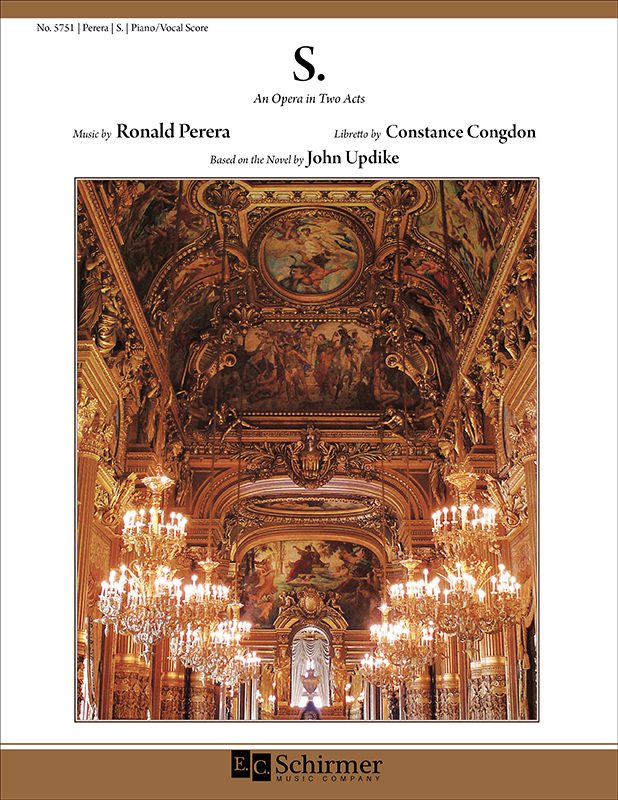

Score Excerpt:
Audio Excerpt:
Excerpt is from Act I, Scene 3. Singers include James Maddelena, David Ripley, Jon Humphrey, John Lemly, Karen Smith Emerson, and Jane Bryden, with Monica Jakuc and Clifton J, Noble, Jr., pianos, and Peter Tanner and John Kelly, percusssion. Paul Flight, conductor.
Electroacoustic music available on CD
| Composed: | 1968 |
| Duration: | 8:00 |
| Publisher: | Pear Tree Press Music Publishers distributed by Subito Music Corp. |
| Catalog Number(s): | PTM 731 cd |
Electroacoustic music available on CD
| Composed: | 1969 |
| Duration: | 5:00 |
| Publisher: | Pear Tree Press Music Publishers distributed by Subito Music Corp. |
| Catalog Number(s): | PTM 732 cd |
Electroacoustic music available on CD
| Composed: | 1970 |
| Duration: | 8:00 |
| Publisher: | Pear Tree Press Music Publishers distributed by Subito Music Corp. |
| Catalog Number(s): | PTM 733 cd |
CD Recording
| Composed: | 1971 |
| Duration: | 8:00 |
| Publisher: | Pear Tree Press Music Publishers distributed by Subito Music Corp. |
| Catalog Number(s): | PTM 734 CD |
Reviews:
Ronald Perera composed “Alternate Routes” entirely on a Moog synthesizer at Dartmouth College. Conceived originally as a dance piece with sounds of widely varying “kinetic properties,” it is a fascinating and well-crafted piece, making great use of tension between dense percussion-like and long, transparent materials.
WNCN Program Guide, NYC 4/77
Organ Solo
Organist Grant Moss gave Hymnos its premiere performance in a recital at Christ Church Cathedral, Springfield, Massachusetts, on October 20, 2013.
The ancient Greek word “hymnos” gave us the Latin word “hymnus” and the English word “hymn.” Hymnos is replete with many well-known, well-loved hymn tunes including: MICHAEL, STAR IN THE EAST, ALL MY HOPE ON GOD IS FOUNDED, LOVE DIVINE, ALL LOVES EXCELLING (HYFRYDOL), AMAZING GRACE, JESUS SHALL REIGN WHERE’ER THE SUN, HOLY, HOLY, HOLY, YE WATCHERS AND YE HOLY ONES, and JERUSALEM, MY HAPPY HOME.
| Composed: | 2013 |
| Duration: | 10:00 |
| Publisher: | E. C. Schirmer Music Company |
| Catalog Number(s): | Organ Score, 8101 |
Reviews:
Commissioned in honor of organist and choirmaster Peter Beardsley on his retirement from Christ Church Cathedral in Springfield, MA, this work comprises two movements. The first movement is based on Star in the East from South Harmony, and the second is based on Michael and Hyfrydol. These three main tunes are personal favorites of Beardsley and the composer. Portions of additional hymn tunes are stated throughout. Registrations and rhythmic groupings of septuplets and octuplets at times give an ethereal effect. Changing and irregular meters are prominent, as well as an array of dynamics. This music will be best served when presented on a well-voiced, three-manual instrument by an organist familiar with the instrument, as frequent registration changes are employed. It is suitable for recital, hymn festival introduction, or other special-presentation occasions.
CrossAccent, Spring 2015
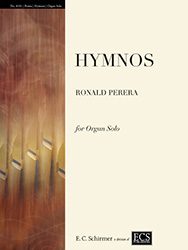

Score Sample:
Audio Excerpt:
Kevin Uppercue, organ
I. Star
II. All Loves Excelling
Organ Solo
| Composed: | 2011 |
| Duration: | 3:10 |
| Publisher: | E. C. Schirmer Music Company |
| Catalog Number(s): | 7857 |
Piano Solo
Waypoints for piano was written with intermediate to advanced piano students in mind. Each of the first eight little pieces exploits a particular pianistic and compositional technique, often making reference to classic works in the literature. The final set of variations has its own theme, but uses each of the previous eight pieces in turn as the basis for the variations. The title refers to the navigational points that satellite navigation systems use to guide us on a journey by land, sea, or air. In this case, the metaphorical journey passes points of reference that are at least somewhat familiar to every musician.
| Composed: | 2011 |
| Duration: | 16:00 |
| Publisher: | Pear Tree Press Music Publishers distributed by Subito Music Corp. |
| Catalog Number(s): | PTM 171 |
Score Sample:
Audio Excerpt:
Performed by Clifton J. Noble, piano
9. Reprise Variations
Two Pianos
| Composed: | 2003 |
| Duration: | 8:00 |
| Publisher: | Pear Tree Press Music Publishers distributed by Subito Music Corp. |
| Catalog Number(s): | PTM 231 |
Piano Solo
Movements:
- Prelude
- Nocturne
- Toccata
| Composed: | 1966 |
| Duration: | 7:00 |
| Publisher: | E. C. Schirmer Music Company |
| Catalog Number(s): | 0242 |
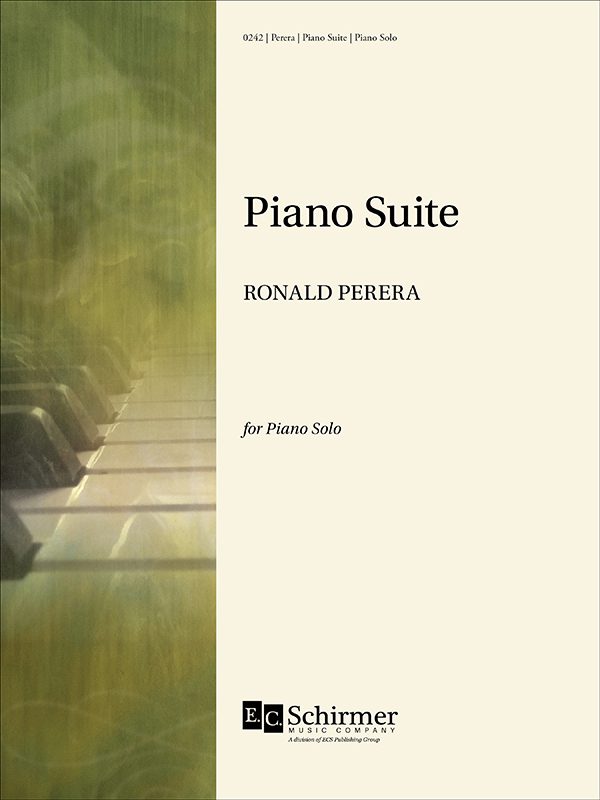

Organ & Electronic Media
| Composed: | 1970 |
| Duration: | 8:00 |
| Publisher: | E. C. Schirmer Music Company |
| Catalog Number(s): | Score, 1486 Electronic Media, 1486A |
Reviews:
“Reverberations” is a sequence of continuous, large and small sections and gestures, sometimes repeating, that concentrate on one parameter, sound, or performance technique at a time…. Perera is to be commended for his clear, uncluttered score and simple, precise instructions…. Of all the organ and tape pieces discussed here, “Reverberations” offers the performer the greatest intellectual stimulation.
Jeanie Rebecca Little, Serial, Aleatoric, and Electronic Techniques in American Organ Music Published Between 1960 and 1972. (Ph.D. Thesis, University of Iowa, 1975)
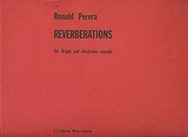

Piano and Synthesizer(s)
| Composed: | 1975 |
| Duration: | 23:00 |
| Publisher: | Pear Tree Press Music Publishing |
| Catalog Number(s): | PTM 7111 |
Score Sample:
Audio Excerpt:
Variation IV, “Switch,” performed by Monica Jakuc
For organ, percussion, and recorded audio
Movements:
- Messengers
- The Trumpet
- Hosannas
| Composed: | 1977 |
| Duration: | 10:00 |
| Publisher: | E. C. Schirmer Music Company |
| Catalog Number(s): | Score, 0244 Electronic Media, 0244A |
Reviews:
A challenging piece for an organ of at least two manuals, percussion, and tape. The first of the three movements, “Messengers,” begins with the organist cuing the tape, which produces what the score calls “crescendo and panning” as the percussionist effects a crescendo on the marimba. The organ’s entrance is quiet, building to an eventual thematic superimposition of simple triads in dissonant combinations. Quick flurries of notes follow, each ending in sustained clusters, a minor second, or a unison. The movement closes with a return to the sustained notes that marked the first appearance of the organ. Movement number two, “The Trumpet,” centers around a tonal cluster that is shuffled between the bass pedals and the lower manual, set against staccato bursts in the top manual and the percussion; the organ holds the final cluster beyond the end of the tape. The most conventional movement, “Hosannas,” follows, complete with key and time signature. The tape establishes a B flat tonal center as the organ, using the 8′ Trumpet stop, proclaims a series of fanfares in fourths and fifths. These figures accelerate to a cadential cluster, then as a triplet ostinato is established by the marimba, a rapid and hypnotic Phil Glass-like pattern begins in the manuals. Various new pitch centers fade in and out on the tape, the organ breaks into a series of short trills in fourths, and a majestic long chord, again based on juxtaposed triads, but this time held longest by the vibraphone, brings the work to an end.
Contemporary Keyboard, February 1980
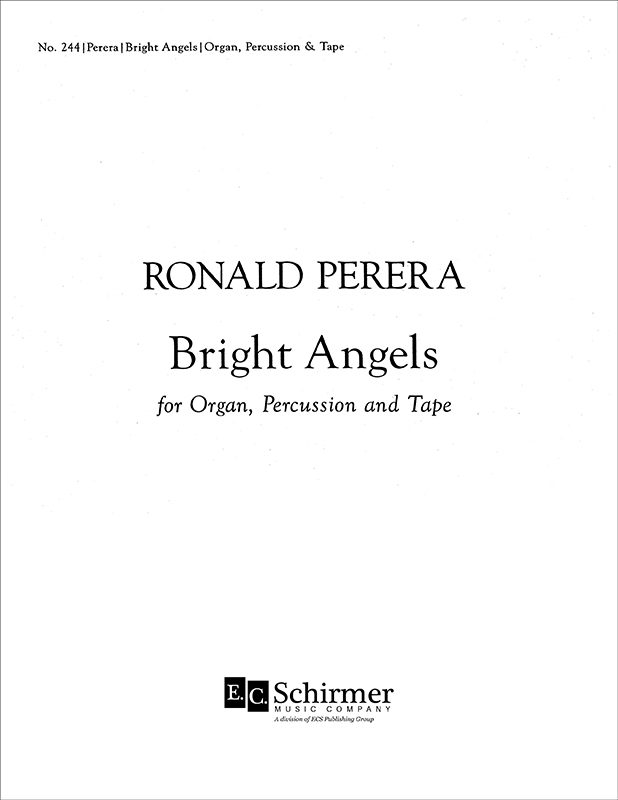

Two pianos and recorded audio
| Composed: | 1979 |
| Duration: | 8:00 |
| Publisher: | Pear Tree Press Music Publishers |
| Catalog Number(s): | PTM 721, 721cd |
Piano Four-hands
Movements:
- The Knucklecracker Waltz
- The Blues Danube Waltz
- Oh-De-Lady-Who? Waltz
| Composed: | 1986 |
| Duration: | 3:00 |
| Publisher: | Pear Tree Press Music Publishers distributed by Subito Music Corp. |
| Catalog Number(s): | PTM 201 |
Organ
| Composed: | 1986 |
| Duration: | 6:00 |
| Publisher: | E. C. Schirmer Music Company |
| Catalog Number(s): | 4144 |
Reviews:
If you are looking for a number that is virile, exiting, different, contemporary, and difficult, this would fill the bill. Perera dedicated the work to Leonard Raver. Those who enjoy avant-garde organ music should not overlook this piece. The American Organist, March, 1992
Organ
| Composed: | 1986 |
| Duration: | 5:00 |
| Publisher: | E. C. Schirmer Music Company |
| Catalog Number(s): | 4145 |
Piano
| Composed: | 1987 |
| Duration: | 6:00 |
| Publisher: | Pear Tree Press Music Publishers, distributed by Subito Music |
| Catalog Number(s): | PTM 121 |
Piano and DX7 Synthesizer
| Composed: | 1987 |
| Duration: | 8:00 |
| Publisher: | Pear Tree Press Music Publishers |
| Catalog Number(s): | PTM 211 |
Organ
This three-movement suite was commissioned by the AGO chapter in Berkshire, Massachusetts. The first movement, “L’Annunziazione,” is a large-scale fantasy, the second, “L’Adorazione,” is a short arioso, and the third, “L’Ascensione,” is a large toccata. The movements are neither too long nor too difficult, and the pieces could be used individually in services or recitals.
Movements:
- L’Annunziazione
- L’Adorazione
- L’Ascensione
| Composed: | 1997 |
| Duration: | 8:00 |
| Publisher: | E. C. Schirmer Music Company |
| Catalog Number(s): | 5165 |
Reviews:
This suite was commissioned by the AGO chapter in Berkshire, Massachusetts, with funding from that and other chapters, organ builders, and individuals. “L’Annunziazione” is a large-scale fantasy, “L’Adorazione” is a beautiful short arioso, and “L’Ascensione” is a large toccata. All three of the movements are typical of those genres… The movements are neither too long nor too difficult, and the pieces could be used individually in services as well as in recitals. This is fine American organ music worthy of consideration.
The Journal of the Association of Anglican Musicians
This work was written to commemorate the 50th anniversary of the founding of the Berkshire (Mass.) AGO Chapter. Its three movements are entitled “L’Annunziazione,” “L’Adorazione,” and “L’Ascensione.”
The musical materials and fervent mood of each movement superbly match the sacred theme in each case, but the piece also stands up perfectly well as “absolute” music. “L’Annunziazione” is rhapsodic in character, and its three distinct themes flow naturally and inevitably into one another in a highly symmetrical (A-B-C-B-A) form. The frequently changing time signatures pose no problem since the rhythm arises out of the clearly expressed thematic ideas. “L’Adorazione” is a slow lullaby in which the composer takes a fresh look at classic melody and accompaniment in the key of C major. Some of the phraseology is Bachian in character (likewise some of the sequences in the middle section), and one could wish that Perera had introduced a proper variation instead of the simple return of the theme. “L’Ascensione” begins like a French toccata but without any well-marked theme in the pedal. The middle section features “open harmonies” in fourths and fifths, with a theme that is subsequently counterpointed against the toccata. This is a strongly expressive work of great formal clarity, written in an up-to-date tonal harmonic language. It is well conceived for the organ, but not technically demanding; the three-manual writing in the outer movements can easily be modified to suit smaller instruments.
The American Organist 5/98
Thanks are due to the Berkshire chapter of the American Guild of Organists, which commissioned this work to celebrate their 50th anniversay. Perera draws his inspiration from three significant moments in the story of Christ: the Annunciation, the Adoration of the Child, and the Ascension. The first movement poses dazzling flourishes in dialogue between manuals and pedal; elsewhere, the figuration alternates with chords on opposing manuals. In the second movement, a limpid flute melody soars above rocking chords to create an engaging, if rather active, lullaby. The work concludes with a flashy toccata in which the two hands frequently duplicate each other’s motions, as is true of the first movement. Spiced with chromaticism, the work remains tonal and would readily appeal to conservative audiences unaccustomed to pungent, glaring dissonances. Because so many of the manual gestures appear in unison at the octave, both together and in alternation, the outer movements may be mastered with relative ease; the middle movement requires a bit more coordination. Recommended for both church and concert performance.
The Diapason 11/99
Viola and Tape
| Composed: | 1973 |
| Duration: | 5:00 |
| Publisher: | E. C. Schirmer Music Company |
| Catalog Number(s): | 0681 |
Viola and Piano
Movements:
- Dance
- Elegy
- Rondo
| Composed: | 1986 |
| Duration: | 8:00 |
| Publisher: | Pear Tree Press Music Publishing distributed by Subito Music |
| Catalog Number(s): | PTM 101 |
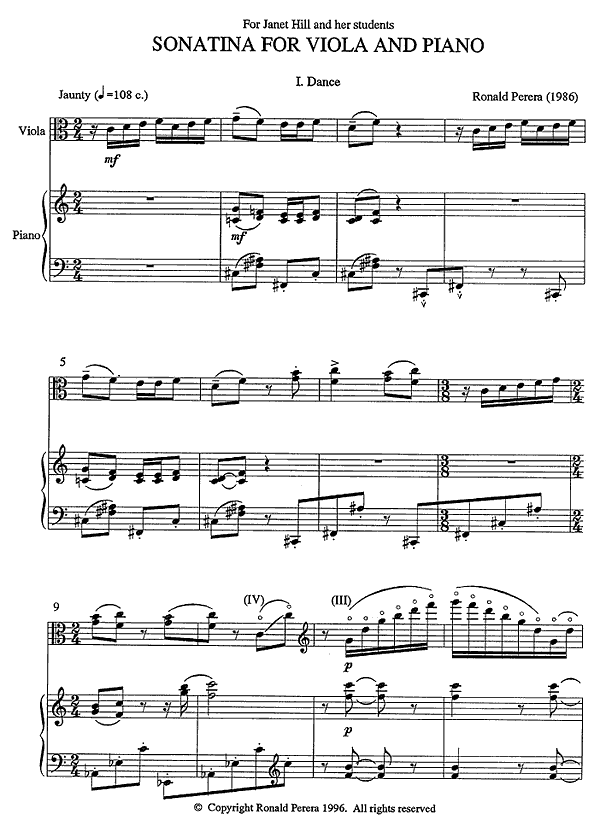

Audio Excerpt:
Janet Hill, viola and John Van Buskirk, piano
Movement 1, Dance
Movement 2, Elegy
Movement 3, Rondo
Violin and Piano
A violin arrangement of the Sonatina for Viola and Piano
Movements:
- Dance
- Elegy
- Rondo
| Composed: | 1998 |
| Duration: | 8:00 |
| Publisher: | Pear Tree Press Music Publishing distributed by Subito Music |
| Catalog Number(s): | PTM 102 |
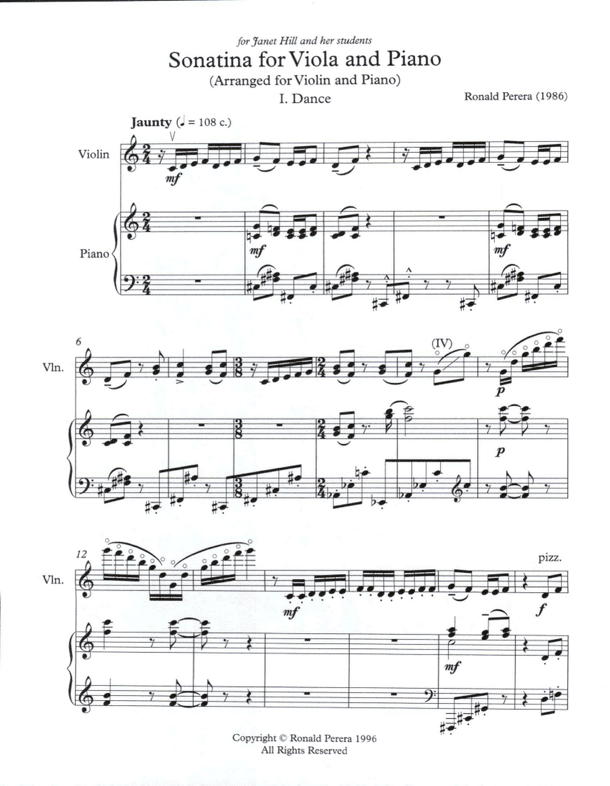

Audio Excerpt (Viola Version):
Janet Hill, viola and John Van Buskirk, piano
Movement 1, Dance
Movement 2, Elegy
Movement 3, Rondo
Medium Voice and Piano
Written when the composer was twenty, these songs for medium voice and piano have a youthful exuberance and innocence that will be appealing to students as well as to mature singers.
Movements:
- Go, and catch a falling star
- Song (“Sweetest Love, I do not go”)
| Composed: | 1961, 1962 |
| Duration: | 6:30 |
| Publisher: | Pear Tree Press Music Publishing distributed by Subito Music |
| Catalog Number(s): | PTM 161 |
Soprano Voice and Tape
Composers engraving of “Dove Sta Amore” for soprano and quadraphonic tape (two-channel version). Many complex markings allow for broad interpretations of the work.
| Composed: | 1969 (rev. 1971) |
| Duration: | 7:00 |
| Publisher: | E. C. Schirmer Music Company |
| Catalog Number(s): | 0149, Score 0149A, Electronic Media |
High Voice and Piano
Apollo Circling contains four lyric songs for high voice and piano on a poem by James Dickey.
| Composed: | 1972 |
| Duration: | 15:00 |
| Publisher: | E. C. Schirmer Music Company |
| Catalog Number(s): | 0151 |
Reviews:
Spec. high voice (c1-c3); 14:30; titles are So Long; The Moon Comes; You Lean Back; You Hang Mysteriously; although Perera describes these as “four lyric songs,” there is considerable drama here; primarily declamatory, disjunct with many difficult high notes; technically, musically, and interpretively difficult; atonal, with tonal areas; stark and intense, with a cold, eerie opening and impassioned close; on the experience of the astronauts’visit to the moon; an evocative, unusual, powerful contemporary cycle; recorded by D’Armand.
A Singer’s Guide to the American Art Song 1870-1980
by Victoria Etnier Villamil (The Scarecrow Press, Inc., Metuchen, NJ & London, 1993)
Somehow, Ronald Perera has devised a set of songs, almost a cycle, that captures and conveys the cold, lonely, earth-longing, stream-of-thought text by James Dickey (“For the First Manned Moon Orbit,” 1969)…. The means by which Perera achieves success in setting Dickey’s text is a fascinating study in itself. He requires of the singer a two-octave range (from C to C2) with the flexibility to negotiate sometimes angular lines, sustained notes, and sudden sharply contrasting dynamic colors. In addition, he must meet the challenge of maintaining interest and bridging the gaps in the often-segmented melodic phrases. For the pianist there are long, stark single notes or chords sometimes interrupted by computer-like twittering rhythms, passages of pointillistic complexity, utilization of the entire scope and color spectrum of the keyboard, a marvelous interplay of the three pedals, and vital, driving ostinato figures that build to striking climaxes. The composer assists both artists with a generous supply of the usual musical road signs in Italian as well as with many evocative mood indications: cold, without expression, agitated, controlled, hushed, fantastic, languid, like drops, with tenderness, with controlled excitement, warm, lyric, passionately, etc. All of these reveal a song-writer of sensitive imagination, yet one who knows what he wants and how, by craft, to obtain it. This is music of calculated spontaneity that commands the listener’s attention… Congratulations are due Ronald Perera for his creation of a musical setting of a text that is both timely and timeless. He and James Dickey have given us a work that lyrically pinpoints an historical milestone in this country’s exploration of space and delves into the minds of the men who experienced that fabulous adventure.
Music Library Association, NOTES
Score Sample:
Audio Excerpts:
Movement 1, “So Long,” performed by Gretchen D’Armand, soprano and Constance LaSalle, piano
Movement 2, “The Moon Comes,” performed by Gretchen D’Armand, soprano and Constance LaSalle, piano
Movement 3, “You Lean Back,” performed by Gretchen D’Armand, soprano and Constance LaSalle, piano
Movement 4, “You Hang Mysteriously,” performed by Gretchen D’Armand, soprano and Constance LaSalle, piano
High Voice and Piano
Winner of the 1990 NATS Art Song Competition. Five songs with text by James Joyce.
Movements:
- I hear an army
- Ecce Puer
- She weeps over Rahoon
- The twilight turns from amethyst
- Sleep now
| Composed: | 1985 |
| Duration: | 13:00 |
| Publisher: | Boosey & Hawkes |
| Catalog Number(s): | VAB 301 |
Reviews:
Ronald Perera’s “Sleep Now,” to poems of James Joyce, received its premiere performance. Written for Smith while Perera was on sabbatical leave in London during the fall of 1985, the five songs are written with exquisite sensitivity to the rhythms of speech, and indeed, resist any imposition of regular foot tapping. The melodic lines, which have a floating, modal flavor, are usually quite long — the last note of a phrase is often held longer than one might expect, as if the singer is to create a sense of unending resonance. The sustaining pedal of the piano, with a few exceptions, is in constant use, contributing to the dreaminess….Though the songs are simple and direct in their expression, there is nothing simple about the writing, and each subsequent performance will help release the music from the printed page. The performance Sunday night represented a good start for a composition that will hopefully have a long and fruitful life.
The Morning Union (Springfield, MA) 10/23/86
Audio Excerpts:
Movement 1, “ I Hear an Army,” performed by Karen Smith Emerson, soprano and Arlene Shrut, piano
Movement 4, “The Twilight Turns from Amethyst,” performed by Karen Smith Emerson, soprano and Arlene Shrut, piano
Movement 5, “Sleep Now,” performed by Karen Smith Emerson, soprano and Arlene Shrut, piano
High Voice and Piano
Movements:
- Take, O take those lips away
- Hark, hark! The lark
- Full fathom five
- Where the bee sucks
- O mistress mine
| Composed: | 1985 |
| Duration: | 8:00 |
| Publisher: | Pear Tree Press Music Publishing distributed by Subito Music |
| Catalog Number(s): | PTM 131 |
Reviews:
Perera has set five familiar Shakespearean song texts: “Take, O take those lips away;” “Hark, hark! the lark;” “Full fathom five;” “Where the bee sucks;” and “O mistress mine.” The settings are vivid and varied, yet simple in expression. Perera has successfully assimilated elements of the new neo-romantic style into his own expressive, eclectic style. The marriage of styles seems natural and inevitable.
Daily News, Springfield (MA) 3/3/87
The Perera songs are effectively written for the voice and piano and cover a number of styles; the most appealing were the first, in which an earlier setting of “Take, O take those lips away” melts into something more contemporary and the fourth, “Where the bee sucks,” set in a lively, jazzy way.
Boston Globe 6/3/87
Audio Excerpt:
Shakespeare Songs performed by Jane Bryden, soprano and John Van Buskirk, piano
1. Take, O take those lips away
2. Hark, hark! The lark
3. Full fathom five
4. Where the bee sucks
5. O mistress mine
Two violins, viola, and cello
Commissioned by South Mountain Concerts. Premiered Pittsfield, MA, September 16, 2004, by the Muir Quartet.
| Composed: | 2004 |
| Duration: | 18:00 |
| Publisher: | Pear Tree Press Music Publishing distributed by Subito Music |
| Catalog Number(s): | 80500311 |
Reviews:
The final work [of the concert] was [Ronald] Perera’s “String Quartet,” written in 2004 but not heard in Northampton until this concert. The players—Joel Pitchon, violin; Romina Kostare, violin; Ronald Gorevic, viola, and Volcy Pelletier, cello—did justice to this challenging and satisfying work.
The second of its three movements was a set of “Variations on a Mandolin Tune,” written as an homage to Perera’s grandfather, who was a concert mandolinist. The movement was played with deep feeling, and was the high point of the concert.
Mark Morford, The Daily Hampshire Gazette, Northampton, MA 11/2013
Perera’s String Quartet was cast in three movements, ranging in character from an acerbic, angular opening through an unabashed sentimental second movement to a straightforward, sunny C major finale.
A stark, assertive opening fanfare built of tritones, sixths, and sevenths provided much of first movement’s impetus and language. The movement unfolded with a disarming mercurial abandon, hopping about in complex meters and teasing the ear with sudden dramatic swerves.
Perera’s program note indicated that the second movement, Variations on a Mandolin Tune, was “an homage to my grandfather, Gino L. Perera, an Italian musician and painter whose early career as a classical mandolinist took him to many American cities in the 1890’s.”
Perera drew this simple, charming G major theme through successive variations of increasing complexity, at first merely decorous and elegant, but gradually clouded by rhythmic and chordal complications until a clever fugue brought round its cheery restatement and gentle final cadence.
The finale was a galloping rondo with little of the rhythmic or harmonic quirkiness that spiced the opening.
Perera put a bird-like main theme through impressive paces. and introduced as an episode a chorale-like tune against arpeggiated chords reminiscent of the Pilgrim’s March from Harold in Italy.
The Republican, Springfield, MA 9/2004
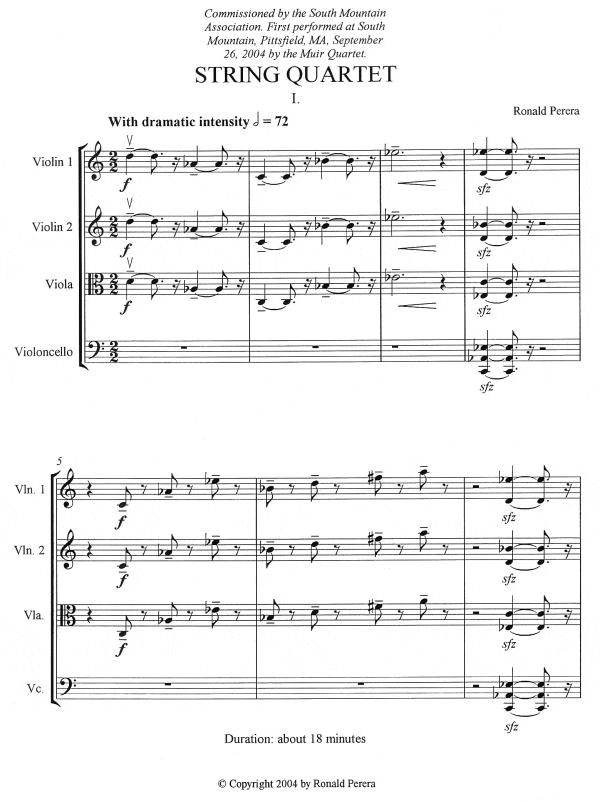

Audio Excerpt:
The Muir String Quartet with Paul Zazofsky and Lucia Lin, Violins; Steve Ansel, Viola; Michael Reynolds, Cello
Movement 3 sample:
Piano Trio: Violin, cello, and piano
Commissioned by Joel Pitchon. The second movement is based on the third movement (“The Symphony”) from The White Whale.
Movements:
- Incisivo
- Adagio cantabile e sostenuto (“The Symphony”)
- Scorrevole
| Composed: | 2002 |
| Duration: | 17:00 |
| Publisher: | Pear Tree Press Music Publishing distributed by Subito Music |
| Catalog Number(s): | PTM 301 |
Reviews:
Perera’s trio is lively and also very American in feeling without having any connection to jazz rhythms, but that doesn’t mean it isn’t invigorating. I was also impressed by his sophisticated handling of rhythm, moving quickly and expertly into neighboring tonalities with the mere flick of a pivot-point within his chords. He is even more adept at this than jazz composer Eddie Sauter was, and Sauter was unquestionably brilliant. Moreover, Perera accomplishes this without making it sound affected or as if he were “leaning into” the harmonic shifts for effect’s sake. He keeps the melodic line and its development going, but although he does begin and end his movements in a fixed key he does not stick with it. The second movement has a lovely effect in which the cello strums like a big guitar against the long-lined violin melody while the piano plays occasional chords sprinkles. As the music develops, Perera also changes both the music’s meter and pacing, introducing an ostinato rhythm with some edgy figures above it here and there. The last movement opens with stabbing figures which then move into a moto perpetuo.
Lynn René Bayley, The Art Music Lounge, Online, 4/2020
Ronald Perera (b.1941) follows next with his 2002 Piano Trio that exemplifies his harmonic daring. Writes Perera, who opted to pen his own pithy program notes for the present CD release, “I have employed what is often referred to as ‘extended tonality,’ including bi-tonality and added-note chords. Sections within a movement may often be distinguished by having their own key center without, for the most part, the use of traditional functional harmony.” The rhythmic patterns in the outer movents are incisive and challenging. Short-short-short-long and long-long-long-short-long patterns are divided and recombined, in the first movement, creating an off-kilter dance rhythm, while in the third the driving impulse is derived from a succession of four quick stepwise descending notes, followed by a short rest and a leap in the opposite direction. (Sound like fun?)
Strongly contrasted to these two formal movements, and indeed everything else in this album, is Perera’s second movement, called “the Symphony” and marked Adagio cantabile e sostenuto. This, the only vocally inspired music on the present progam, was derived from Perera’s earlier scene for baritone and orchestra, The White Whale, whose text was drawn from Chapter 132 of Herman Melville‟s Moby Dick. This is the crucial scene in which Captain Ahab unburdens his tortured soul to his first mate Starbuck. It contains a profound longing for peace and the consummation of his weary, obsessive quest for the White Whale, beginning with the line “And the air smells now as if it blew from a far-away meadow,” and ending with “Aye, toil how we may, we all sleep at last on the field.” The transparency of the musical structure Perera employs helps us understand this mood as immediately as if actual words were present.
Phil’s Classical Reviews, Atlanta Audio Club, Online, 5/2020
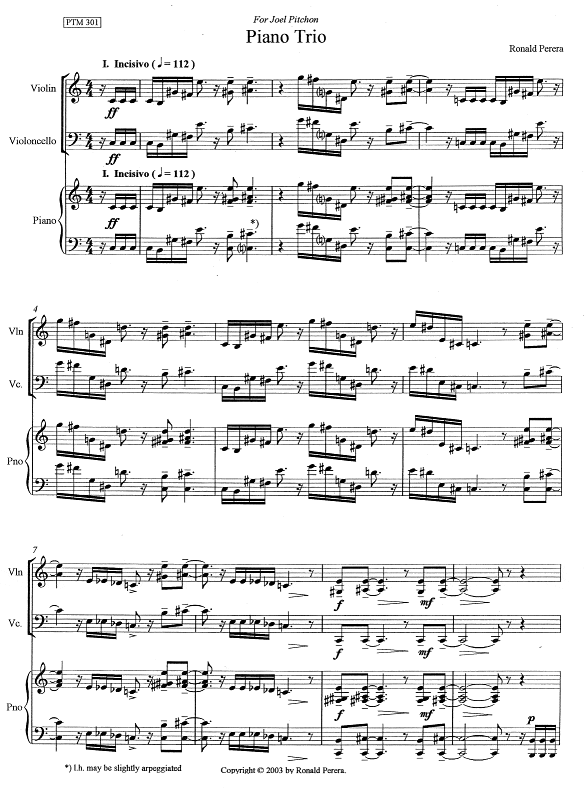

Audio Excerpt:
Joel Pitchon, violin, Volcy Pelletier, cello, and Clifton J. Noble, Jr., piano
Movement 1. Incisivo:
Mezzo-Soprano and Flute (doubling piccolo, alto flute), clarinet (doubling bass clarinet, alto sax), violin, viola, cello, piano, tape
Commissioned by Boston Musica Viva. Three poems by the German author reflecting on Germany after World War II. The first poem, “Gleisdreieck,” was inspired by the train station of the same name on Berlin’s elevated railway. The second poem, “Klappstühle” (“Folding Chairs”), uses the chairs as a metaphor for the impermanence of home caused by the war. The final poem, “Schlaflos” (“Sleepless”), is the nightmarish vision of a man with insomnia counting himself to sleep by recounting his life. Eventually he confronts his own and his nation’s guilt, for which it seems there is no atonement.
  | Crossing the Meridian is the title work on the CD Crossing the Meridian, which offers a collection of Ronald Perera’s works for chamber music with voice. It includes Crossing the Meridian, Three Poems of Günter Grass, Visions and Alternate Routes. Performed by the Boston Musica Viva. Soloists include Elsa Charlston, John Aler, Jane Bryden, and Karen Smith Emerson. On CRI.Available on: Amazon iTunes |
Movements:
- Gleisdreieck
- Klappstühle
- Schlaflos
| Composed: | 1974 |
| Duration: | 22:00 |
| Publisher: | E. C. Schirmer Music Company |
| Catalog Number(s): | 0160, Study Score Instrumental parts available for rental. |
Reviews:
Ronald Perera’s “Three Poems of Günter Grass” used tape and imaginative ensemble writing to vividly conjure the melancholy anguish of life in postwar Germany.
The Boston Globe, Boston, MA, 2008
Ronald Perera’s setting of Günter Grass poems, commissioned in1974 and mixing electronic tape with voice (the estimable Pamela Dellal), spoken word and instruments, showed that trendy doesn’t have to go out of date if done well.
Boston Herald, Boston, MA, September, 2008
This time around I caught your Grass songs, and, to say something outrageously self-centered, it was one of the few times I regretted that I was not writing. They are a so compelling, sensitive, imaginative extension of the poetry, and one of the things I found especially exciting was your courage, as it were, in making them the point of departure for really big pieces of music.
Letter to the composer 12/15/75 from Michael Steinberg, former Boston Globe music critic, former Artistic Advisor, San Francisco Symphony
Mr. Perera’s musical language is a blend of avant garde vocal and instrumental techniques (sprechstimme, aleatory passages, use of string and wind microtones, prepared piano, etc.) and the semi-popular sound worlds of Kurt Weill and Johann Strauss. The composer combines these elements in a very dramatic setting of three poems which, although symbolic rather than explicit, make powerful statements about the recent political history of Germany.
NATS Bulletin 5/78
The most interesting work on Stock’s concert was Perera’s song-cycle, a powerful setting of Grass’ disturbing poems in which the human voice is accompanied by six instruments and electronic tape.
Pittsburgh Post-Gazette 3/2/81
Shapely lines wound through a leisurely and well-integrated texture for tape and instruments, overlain by a collage of quotations and memories: Strauss waltzes, political songs, the sounds of the Berlin overhead railway.
The Independent (London) 10/20/88
Three Poems of Günter Grass is, quite simply, one of the most haunting works of the last 25 years. Scoring for soprano, chamber ensemble, and electronic tape, composer Ronald Perera sets three poems by the German author depicting different aspects of Germany after the Second World War. The tape is used to provide musique concrete derived from the sounds of Germany—a departing train, a military march, a Nazi rally (the unmistakable voice of Hitler is very evident in the third song)—in effect local color for the eloquent soprano line and imaginative instrumental writing. The first song, Gleisdreieck, was inspired by the train station of the same name on Berlin’s elevated railway. Prior to the Berlin Wall it was where one crossed the frontier from west to east. Grass uses it as a metaphor for the rootlessness of postwar German society, and Perera sets it to a variety of train sounds, real and musical. The second song, Folding Chairs (I give the titles in English; the cycle is sung in German), uses the chairs as a metaphor for the impermanence of home caused by the war. Perera sets it to ghostly, distorted reminiscences of Strauss’s Kunstlersleben (Artist’s Life). The vocal line is itself a ghost of the many arrangements of Strauss waltzes for soprano and orchestra, complete with climactic high note, a phantom of a culture devastated by the Nazis. The final song, Sleepless, is the nightmarish vision of a man with insomnia counting himself to sleep by recounting his life. Eventually he recounts the guilt of his actions during the war, a guilt for which there is no atonement. Words do not convey the power of this 20 minutes or so of music, as wrenching in its way as Schoenberg’s harrowing A Survivor from Warsaw. The fine soloist, Elsa Charlston, is beyond praise.
John Story, Fanfare Magazine, January/February 1999

